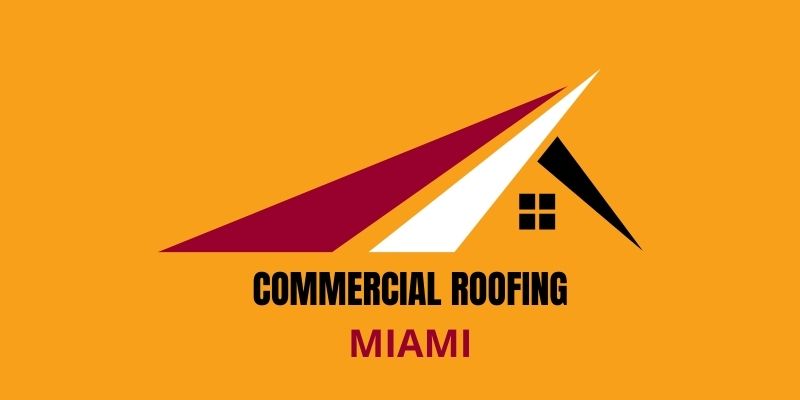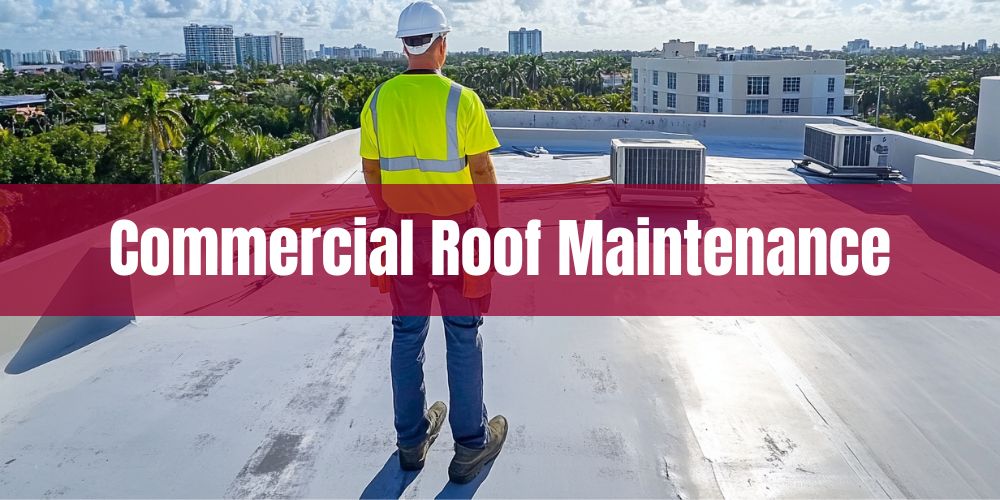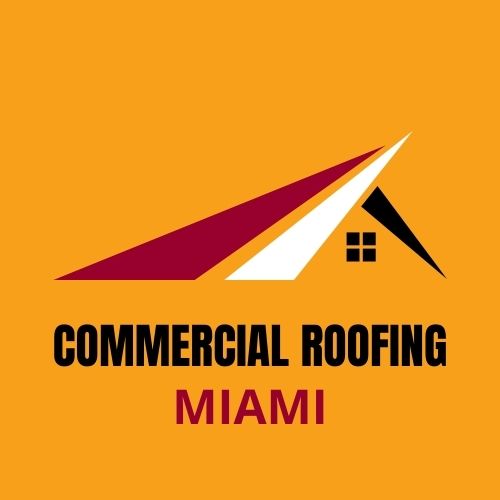Commercial roof maintenance involves the regular inspection, cleaning, repair, and preservation of roofing systems on commercial properties to prolong their lifespan and maintain functionality. It includes activities like removing debris, checking for and repairing leaks or damages, and ensuring drainage systems are clear. Routine maintenance helps to identify potential issues early, preventing costly repairs and ensuring the roof can continue to withstand environmental stressors. Proper commercial roof maintenance is crucial for safeguarding the structural integrity and energy efficiency of a building. Commercial Roofing Miami provide commercial roof maintenance services across the Miami, Florida area.
What Is Commercial Roof Maintenance?
Commercial roof maintenance involves a series of routine inspections and upkeep activities to ensure the longevity and functionality of commercial roofing systems. The process includes regular inspections, cleaning of gutters and downspouts, repairing minor damages like leaks and punctures, and replacing damaged or worn-out roofing materials. Maintenance is crucial to preventing significant damage, which can lead to expensive repairs or even premature replacement of the entire roof. Additionally, it helps in maintaining energy efficiency and safety standards necessary for commercial buildings. Regular maintenance not only extends the lifespan of the roofing system but also preserves the property value. It is essential for building owners to adhere to a routine maintenance schedule, tailored to their specific roof type and local environmental conditions.
In Miami, Florida, the high humidity, intense sun exposure, and frequent rainstorms necessitate diligent commercial roof maintenance practices. Roofing systems in the area must be capable of withstanding the subtropical climate, which means regular inspections and timely repairs are crucial to combat heat stress and water damage.
Have a question about an upcoming project?
How Does Miami's Climate Impact Commercial Roof Maintenance?
Miami's climate, characterized by heavy rainfall, humidity, and intense sun, necessitates proactive roof maintenance strategies for durability. The frequent rain can lead to water pooling and potential leaks, while high humidity accelerates material deterioration. Furthermore, intense UV rays can cause roof materials to weaken and degrade over time.
- Water Resistance: Regular inspections to mitigate damage from heavy rains and potential leaks.
- Material Durability: Choose materials resistant to Miami's high humidity-driven deterioration.
- UV Protection: Maintain UV coatings to prevent damage from intense sunlight exposure.
- Mold Prevention: Implement ventilation strategies to minimize mold growth due to high humidity.
- Storm Preparedness: Reinforce roofs to withstand the impact of tropical storms and hurricanes.
1. Water Resistance: Regular inspections to mitigate damage from heavy rains and potential leaks
Water resistance involves conducting regular inspections of commercial roofing systems to identify vulnerabilities that could lead to damage from heavy rains and potential leaks. The climate in Miami, characterized by heavy rainfalls and high humidity, poses a significant risk to commercial roofs that are not properly inspected and maintained. Regular inspections ensure that any weak spots susceptible to leaks are addressed before they can result in costly water damage, maintaining the structural integrity of the roof. During inspections, attention should be focused on areas prone to pooling water or deteriorating seams. By promptly repairing these vulnerabilities and reinforcing water-resistant barriers, you can prolong the lifespan of the roofing system. Consistent maintenance practices are crucial to prevent moisture-related issues, safeguard investments, and ensure business continuity in Miami's challenging climate.
2. Material Durability: Choose materials resistant to Miami's high humidity-driven deterioration
Material durability in commercial roofing refers to the ability to select and use materials that can withstand the degrading effects of high humidity, common in Miami, which accelerates deterioration. Miami's high humidity levels significantly impact commercial roof maintenance by promoting faster wear and tear on materials not specifically designed to resist moisture-induced damage. Humidity can lead to mold growth, material swelling, and corrosion, which can all compromise the structural integrity and longevity of a commercial roof. To combat these issues, selecting materials like EPDM rubber or PVC membranes, which are inherently moisture-resistant, is crucial. Regular inspections and maintenance to spot early signs of humidity damage can prevent more severe roof failures. Employing a proactive maintenance strategy will help extend the lifespan of the roof, reducing long-term repair and replacement costs for commercial properties in Miami.
3. UV Protection: Maintain UV coatings to prevent damage from intense sunlight exposure.
UV protection involves applying and maintaining specialized coatings on commercial roofs to shield them from the harmful effects of prolonged sunlight exposure, which can lead to material degradation. The intense sunlight prevalent in Miami's climate can exacerbate UV damage, making it crucial for commercial roofs to have robust UV protective measures in place. Without proper coatings, materials are more susceptible to cracking and structural decline, leading to increased maintenance costs. Effective UV protection involves selecting coatings that reflect a significant portion of sunlight, thereby minimizing heat absorption and prolonging the roof's lifespan. Regular maintenance and reapplication of these coatings ensure continued protection and can prevent premature roof failures. This proactive approach enhances the roof's performance, safeguards the building's interior, and helps control energy costs in sunny climates like Miami.
4. Mold Prevention: Implement ventilation strategies to minimize mold growth due to high humidity
Mold prevention through ventilation involves creating airflow systems that reduce moisture accumulation within roofing structures, thereby hindering the conditions that promote mold growth. Miami’s humid climate exacerbates the potential for mold growth on commercial roofs, making effective ventilation a critical aspect of roof maintenance. By improving air circulation, roofing systems can better manage moisture levels, thus minimizing mold-related issues that could compromise structural integrity and indoor air quality. Consistent monitoring of humidity levels and airflow will help maintain effective mold prevention. Commercial buildings might consider installing continuous ventilation systems or using dehumidifiers in at-risk areas to combat persistent moisture. Regular roof inspections to check for any blockages or deficiencies in the ventilation system can ensure that mold-prevention measures remain effective over time.
5. Storm Preparedness: Reinforce roofs to withstand the impact of tropical storms and hurricanes
Storm preparedness involves strengthening commercial roofing systems to endure the powerful forces of tropical storms and hurricanes by enhancing structural integrity, fastening methods, and material resilience. Miami’s climate, characterized by its susceptibility to tropical storms and hurricanes, makes reinforced commercial roofing essential. High winds and heavy rain associated with these storms can lead to severe damage if roofs are not adequately prepared to withstand such conditions. To safeguard commercial properties, enhancing roof fastening systems, employing impact-resistant materials, and reinforcing roof edges are critical strategies. Regular maintenance checks and assessments before storm season can help identify potential vulnerabilities. Prioritizing storm-ready roofing solutions not only protects the building's interior but also reduces potential financial losses due to storm-related damages.
What Are Key Steps For Commercial Roof Maintenance In Miami?
Regular inspections and timely repairs are crucial for effective commercial roof maintenance in Miami. The city's unique climate, characterized by high humidity, intense sunlight, and the risk of hurricanes, demands attentive upkeep to prevent costly damage. By proactively addressing potential issues, businesses can ensure the longevity and functionality of their roofing systems.
- Regular Inspections: Schedule inspections semi-annually to check for any damage or wear.
- Debris Removal: Clear gutters and roof surfaces to prevent water accumulation and leaks.
- Sealant and Flashing: Repair or replace deteriorating sealants or flashing to maintain waterproofing.
- Address Ponding Water: Ensure proper drainage to prevent water pooling, which can degrade roofing materials.
- Hurricane Preparedness: Reinforce the roof structure to withstand high winds and storm conditions.
1. Regular Inspections: Schedule inspections semi-annually to check for any damage or wear.
Regular inspections involve assessing a commercial roof twice a year to identify and address any signs of damage or deterioration, ensuring the durability and reliability of the roofing system. Regular inspections are a critical component of commercial roof maintenance, especially in places like Miami where severe weather conditions can frequently affect roofing integrity. By routinely checking for damage and wear, property owners can mitigate the risk of leaks and structural weaknesses, preserving the roof’s performance amidst Miami's challenging climate conditions. Conducting semi-annual inspections helps spot potential problems early, allowing for minor repairs before they escalate into major, more costly issues. In addition to protecting the building’s interior from water damage, regular inspections can also extend the roof's lifespan by ensuring that maintenance tasks such as cleaning drains and repairing minor tears are consistently performed. Scheduling these inspections aligns with best practices in commercial roofing, ensuring the roof remains in optimal condition and providing long-term cost savings by preventing unexpected failures.
2. Debris Removal: Clear gutters and roof surfaces to prevent water accumulation and leaks.
Debris removal involves the regular clearing of gutters and roof surfaces to prevent water buildup, which can lead to leaks and structural damage. Regular debris removal is crucial for commercial roof maintenance in Miami, where heavy rainfall can quickly cause significant water accumulation on rooftops. By efficiently managing water flow, cleaning debris ensures the roof remains watertight, reducing the risk of long-term deterioration and costly repairs. Maintaining clear gutters and roof surfaces can alleviate additional stress on the roofing structure, especially during Miami’s rainy season. This proactive approach helps in preventing blockages and overflow, which can lead to water infiltration and mold growth. Regular maintenance checks can identify areas that are prone to debris accumulation, allowing for quicker interventions and reinforcing the roof's longevity and performance.
3. Sealant and Flashing: Repair or replace deteriorating sealants or flashing to maintain waterproofing
Sealant and flashing repair involves addressing worn or damaged materials that serve as a barrier to prevent water intrusion, thereby maintaining the roof's waterproof integrity. Effective sealant and flashing maintenance is crucial for commercial roofs in Miami to withstand the region's heavy rain and humid climate, which exacerbates wear and tear. Regular inspections and timely repairs help avoid costly water damage and preserve the building's structural integrity. Routine roof assessments should include checking the condition of sealants and flashings for signs of aging, such as cracks or separation. Immediate remediation can prevent minor issues from escalating into significant leaks or structural damage. Deploying high-quality, weather-resistant materials for repairs and replacements can enhance the roof's resilience against Miami’s challenging weather conditions, extending its lifespan and performance.
4. Address Ponding Water: Ensure proper drainage to prevent water pooling, which can degrade roofing materials.
Addressing ponding water involves creating effective drainage solutions to prevent water from accumulating on the roof surface, which can lead to deterioration of the roofing materials. Ponding water is a particular concern for commercial roofs in Miami due to the region's frequent heavy rains and flat roof designs. Without proper drainage, water accumulation can lead to roof leaks and material breakdown, requiring more frequent and costly repairs. Ensuring adequate drainage systems can significantly reduce these risks and prolong the roof's functional lifespan. To mitigate the challenges of ponding water, regularly inspect and clean gutters, downspouts, and drains to avoid blockages. Additionally, investing in a tapered insulation system can help direct water flow off the roof more effectively. Regular maintenance and adjustments to drainage can prevent the buildup of saturated wet spots, thereby maintaining the roof in optimal condition.
5. Hurricane Preparedness: Reinforce the roof structure to withstand high winds and storm conditions
Hurricane preparedness involves enhancing the structural integrity of a commercial roof to ensure it can endure extreme weather events, such as high winds and intense storm activity. Protecting commercial roofs against hurricane damage is crucial for Miami, where hurricanes pose a significant threat during the storm season. Reinforcing the roof structure not only safeguards the building and its contents but also reduces long-term repair costs and operational disruptions caused by severe weather. Ensuring that a roof is adequately reinforced against hurricanes aligns with proactive maintenance strategies that are essential for commercial buildings in hurricane-prone areas like Miami. Enhanced structural reinforcement may include installing impact-resistant materials and securing roof decks to minimize wind uplift. Regular inspections to assess potential vulnerabilities and the application of storm-resistant coatings can also play a vital role in maintaining roof resilience. By preparing for hurricanes in advance, commercial property owners contribute to increased safety and continuity of their operations during and after severe weather events.
How Often Should Commercial Roofs Be Inspected In Miami?
Commercial roofs in Miami should be inspected at least twice a year. This frequency helps to identify any potential issues early, especially given Miami's unique weather patterns that include heavy rain, strong winds, and the possibility of hurricanes. Regular inspections also contribute to prolonging the life of the roof and ensuring structural integrity.
- Weather Influence: Miami’s frequent storms necessitate biannual roof inspections.
- Hurricane Preparedness: Ensure the roof can withstand potential hurricane impacts.
- Moisture Control: Identify and repair leaks promptly due to high humidity.
- Maintenance Costs: Regular inspections reduce long-term repair expenses.
- Warranty Compliance: Frequent checks may be required by roofing material warranties.
1. Weather Influence: Miami’s frequent storms necessitate biannual roof inspections
Weather influence refers to the need for twice-yearly checks on commercial roofs in Miami due to the high frequency of storms that can cause damage. This connection is clear when considering the question of how often commercial roofs should be inspected in Miami, as the region's climate necessitates frequent assessments to ensure roof integrity. Biannual inspections become crucial, as they help address any damage early on, thereby preventing more extensive repairs. Regular inspections ensure that any minor issues caused by storms are quickly resolved, safeguarding the building from potential leaks or structural damage. Miami’s storm season often brings high winds, heavy rain, and potential debris impacts, all of which can strain roofing systems. Keeping a routine of biannual inspections allows for timely maintenance and repairs, reducing the likelihood of significant damage and costly repairs in the future. This proactive approach not only secures the building but also extends the roof's lifespan by preserving its structural integrity against environmental stresses.
2. Hurricane Preparedness: Ensure the roof can withstand potential hurricane impacts.
Hurricane preparedness involves strengthening a commercial roof to resist the high winds and debris impact typical of hurricane events, ensuring that its structural integrity and waterproofing capabilities are maintained under severe weather conditions. Frequent inspections of commercial roofs in hurricane-prone areas like Miami are crucial to identifying weaknesses that could be exacerbated by a storm. By assessing and fortifying weak points in roofing systems, businesses can significantly reduce the risk of severe damage during a hurricane, thereby protecting their assets and operations. Regular inspections also enable timely maintenance, which is pivotal for maintaining the roof’s resilience against extreme weather conditions. Implementing upgrades, such as reinforcing roof anchoring systems and installing impact-resistant materials, can further enhance a roof's ability to withstand hurricane forces. Furthermore, establishing a pre-hurricane season inspection routine ensures that any necessary repairs or reinforcements can be executed well before any threats are imminent. This proactive approach not only mitigates potential damage but also aids in safeguarding the structural integrity of the building, minimizing costly disruptions and repair costs in the aftermath of a hurricane.
3. Moisture Control: Identify and repair leaks promptly due to high humidity.
Moisture control involves strategically identifying and promptly repairing leaks in a commercial roofing system to prevent damage from high humidity, which can cause mold growth and structural degradation. Regular inspections of commercial roofs are essential for early detection of leaks, especially in humid climates like Miami. Timely repairs can prevent moisture-related issues that are exacerbated by high humidity, thus maintaining the roof’s integrity and preventing costly structural damage. Addressing moisture control proactively can enhance the longevity and durability of the roofing system. This includes sealing all joints and seams properly and employing moisture-resistant materials during installation. Ongoing maintenance and swift leak repairs help protect the building from moisture intrusion and potential interior damage caused by leaks and high humidity conditions.
4. Maintenance Costs: Regular inspections reduce long-term repair expenses
Maintenance costs refer to the expenses associated with performing regular inspections and upkeep on a commercial roofing system to prevent costly repairs in the future. Regular inspections are crucial for commercial roofs in Miami due to the area’s high humidity and frequent storms, which can cause significant wear over time. By catching minor issues early through scheduled inspections, long-term repair expenses can be minimized, ensuring the roof's integrity and performance. Proactive maintenance on Miami's commercial roofs not only extends the lifespan of the roofing materials but also prevents water intrusion and mold growth, common due to the region's moist climate. A well-maintained roofing system lessens the likelihood of extensive damage caused by severe weather events, thus safeguarding building operations and reducing overall repair costs. Scheduling regular maintenance can also keep the roof in compliance with any existing warranties, which often require periodic upkeep.
5. Warranty Compliance: Frequent checks may be required by roofing material warranties
Warranty compliance involves adhering to the specific maintenance and inspection guidelines outlined by roofing material warranties to ensure coverage remains valid. Regular inspections of commercial roofs, particularly in climates such as Miami's, are crucial to maintaining warranty compliance as high heat and moisture levels can exacerbate roofing wear and tear. Consistent checks can help identify and remedy potential issues early, thereby preventing costly damage while ensuring that warranty protection remains intact. For commercial building owners, prioritizing these inspections not only ensures adherence to warranty requirements but also extends the roof's lifespan by addressing minor issues before they develop into significant problems. By faithfully following a prescribed inspection schedule, companies can avoid voiding their warranties and maintain the value and integrity of their roofing investments. Proper documentation of these checks is also necessary to support any potential warranty claims in the future.


